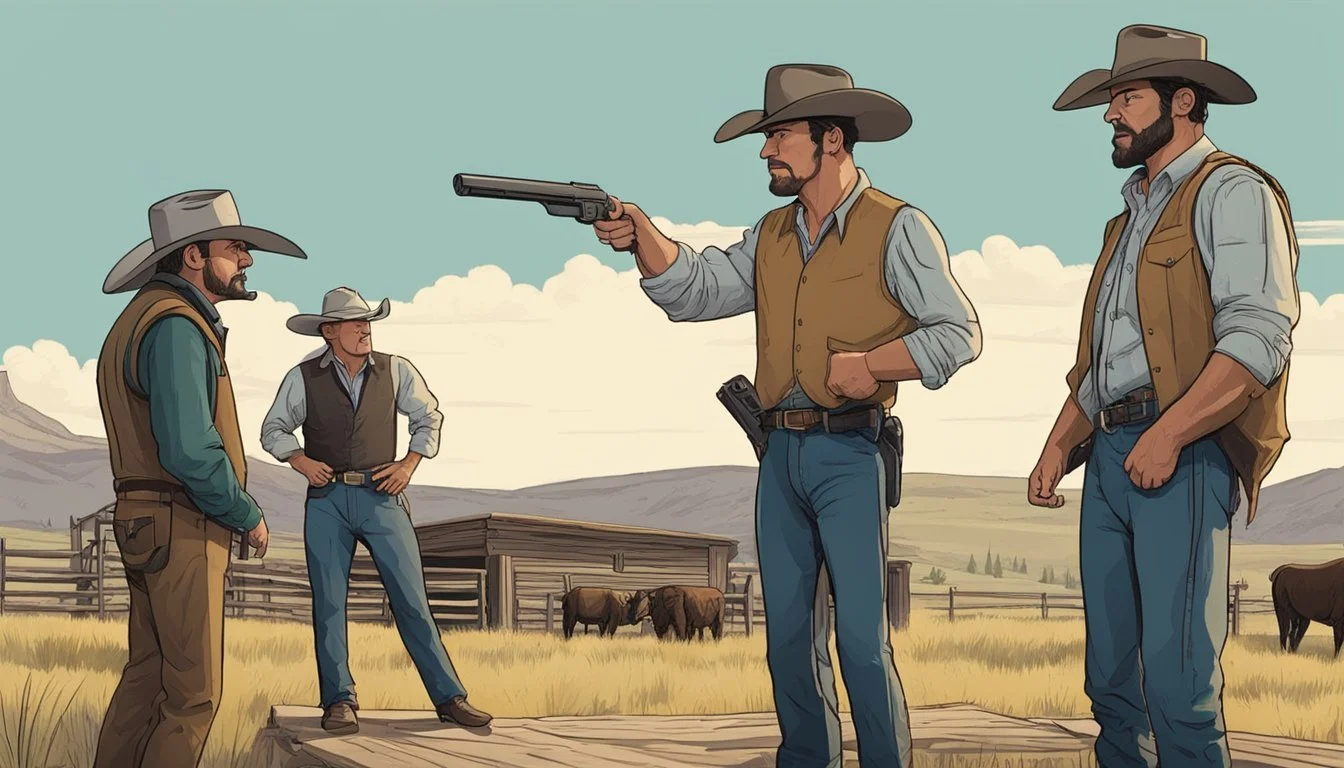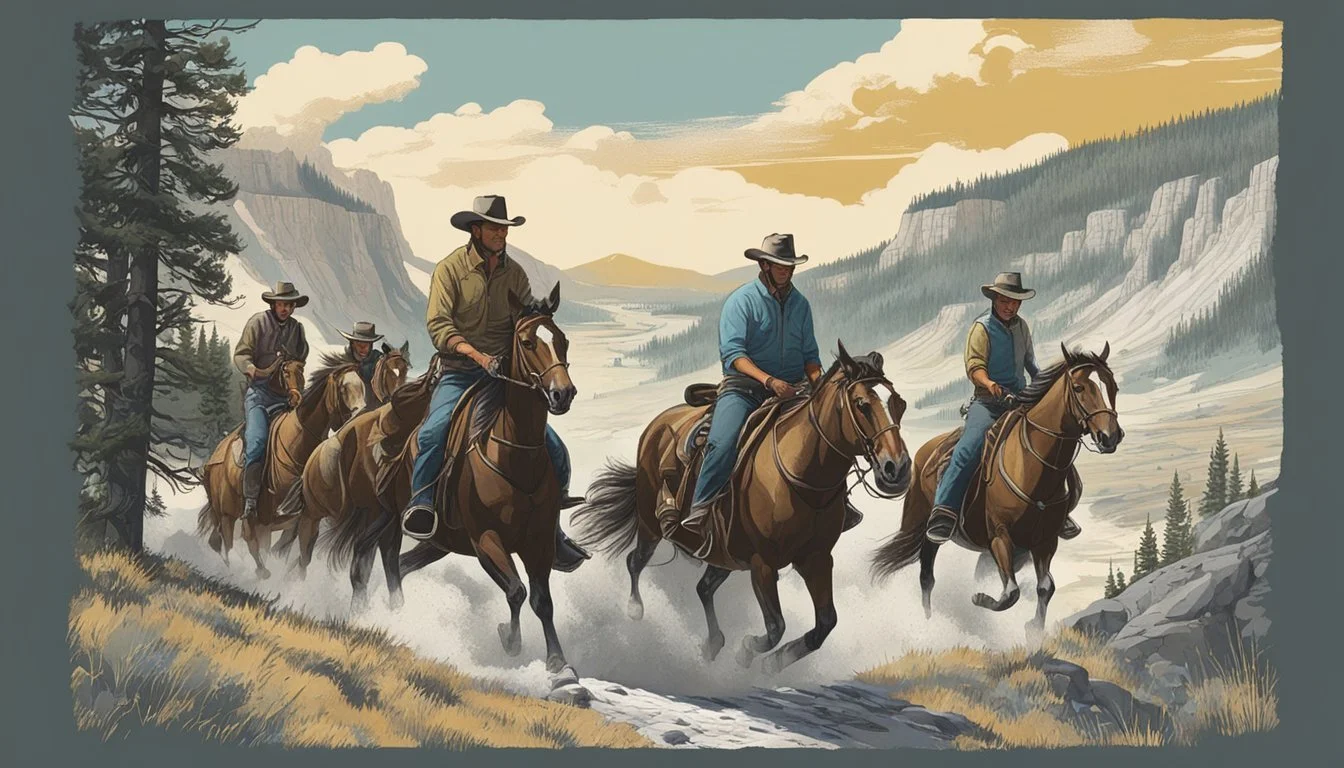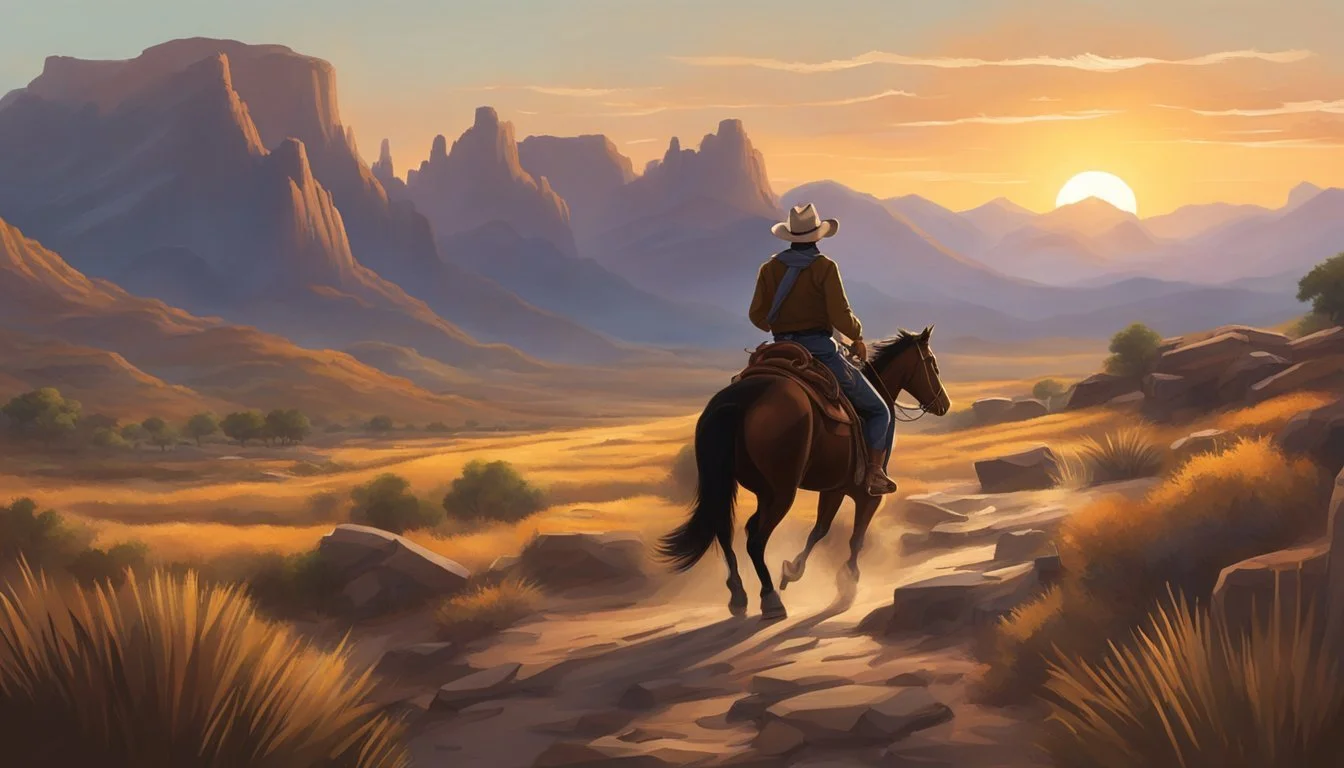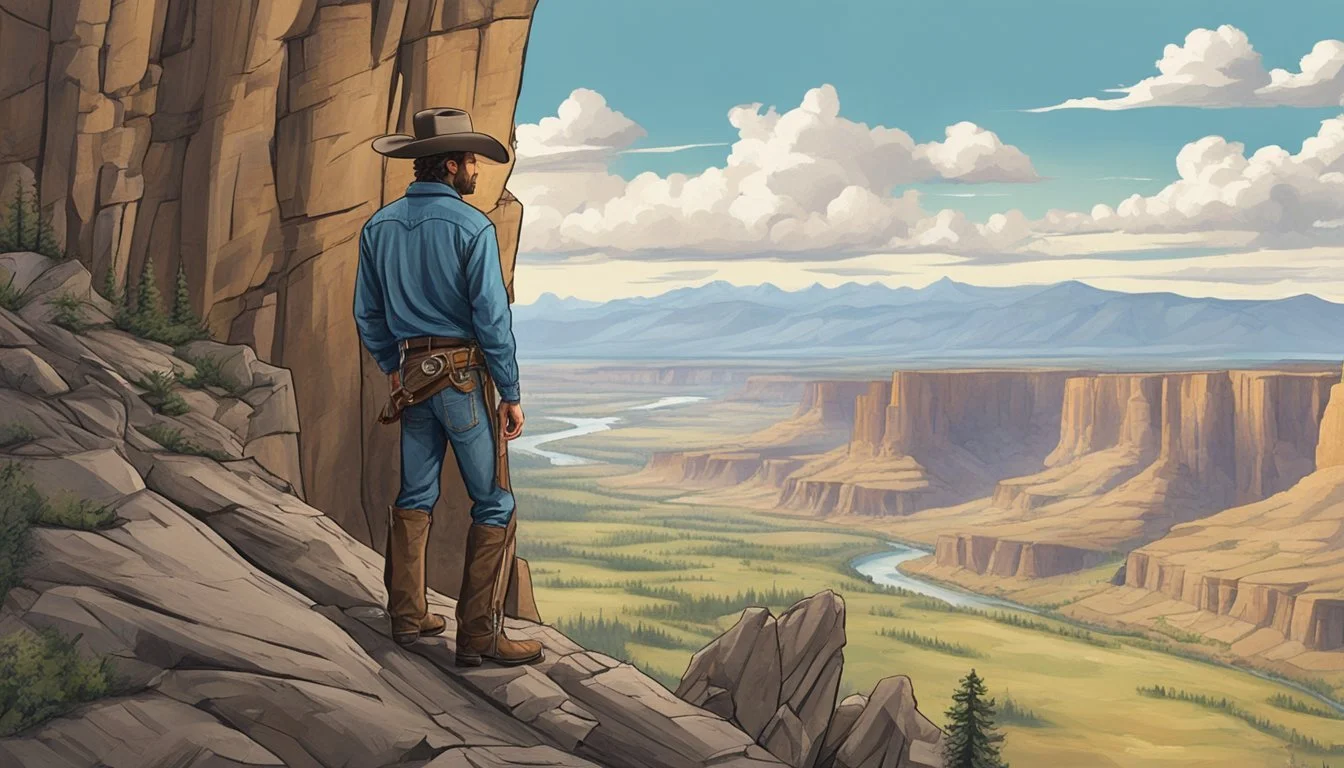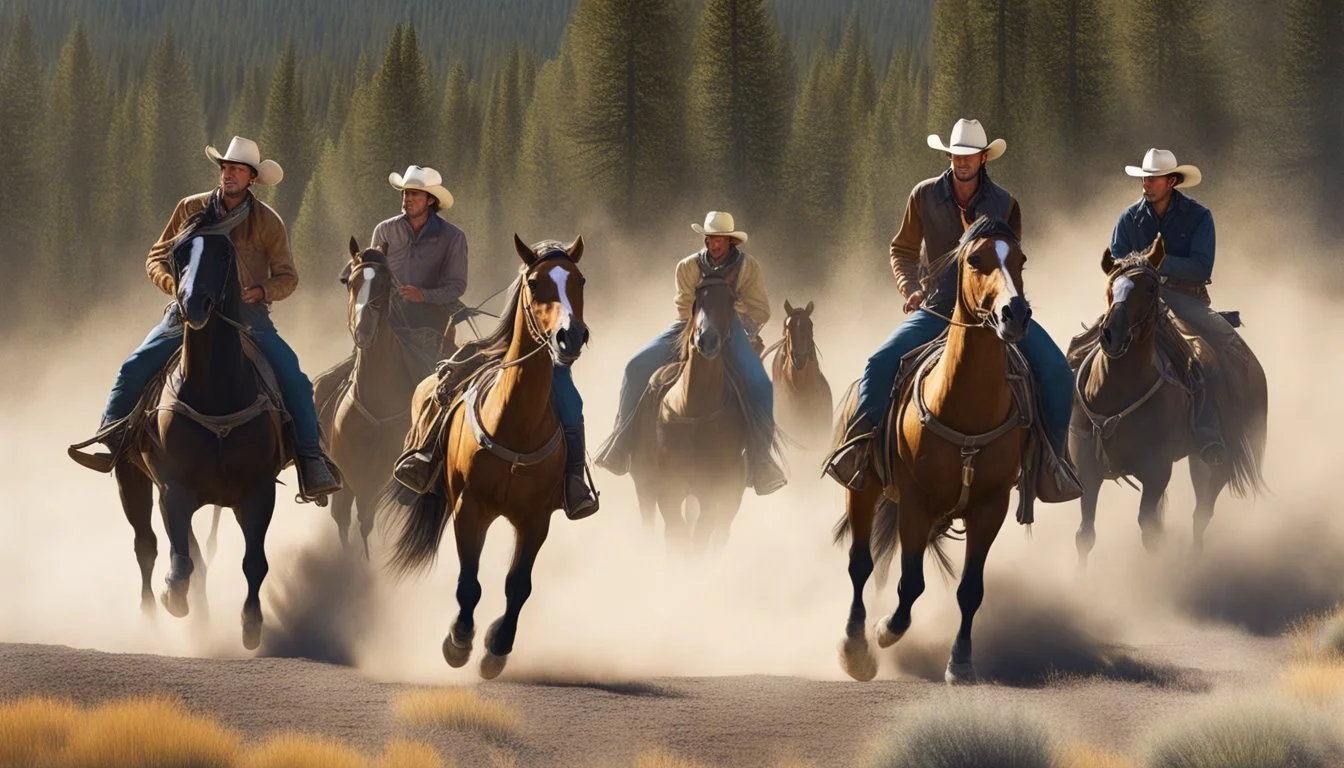Shocking Secrets Revealed: What Happened at Yellowstone Will Leave You Speechless
Yellowstone, the popular neo-Western drama series, concluded its fifth season with a bang. The finale brought major changes for the Dutton family and their iconic ranch.
The Yellowstone ranch was sold, marking the end of an era for the Dutton legacy. This shocking development came after years of battles to preserve their land and way of life. The sale coincided with the death of John Dutton, the family patriarch played by Kevin Costner.
The finale also featured several full-circle moments and fulfilled prophecies. Characters faced new beginnings and dramatic endings as the story wrapped up plot threads that had been woven throughout the series since its 2018 premiere. While not officially marketed as a series finale, the episode had a sense of finality that left viewers with a mix of satisfaction and anticipation for potential future developments.
The Setting of Yellowstone
Yellowstone's setting encompasses a vast, rugged landscape steeped in history and cultural significance. The show's backdrop plays a crucial role in shaping the characters and storylines.
Geographical Location
Yellowstone takes place in Montana's Paradise Valley, a picturesque region nestled in the Rocky Mountains. The fictional Dutton Ranch, the show's central location, sprawls across thousands of acres of pristine wilderness. Rolling hills, expansive grasslands, and snow-capped peaks create a stunning visual backdrop.
The ranch's proximity to Yellowstone National Park adds to its allure and environmental importance. Pristine rivers and forests surround the property, showcasing Montana's natural beauty.
Historical Significance
The Dutton Ranch embodies the spirit of the American West. Its roots trace back to the late 19th century when the Dutton family first settled in the area. The ranch represents a bygone era of cattle barons and open ranges.
Over generations, the Duttons have fought to maintain their land and way of life. This struggle against modernization and encroaching development forms a central theme in the show.
The ranch's longevity reflects the resilience of Western ranching culture in the face of changing times.
Native American Roots
The land on which Yellowstone is set holds deep significance for Native American tribes. The nearby Broken Rock Indian Reservation plays a prominent role in the series, highlighting the complex relationships between ranchers and indigenous communities.
Conflicts over land rights and resource management often arise, reflecting real-world tensions in the American West. The show explores the rich cultural heritage of Native American peoples and their connection to the land.
Traditional practices and spiritual beliefs of indigenous characters add depth to the narrative and provide a counterpoint to the ranch's Western culture.
Plot Overview and Themes
Yellowstone revolves around the Dutton family's struggles to maintain control of their vast Montana ranch. The series explores power dynamics, family loyalty, and the clash between tradition and progress.
The Dutton Family Dynamics
John Dutton, the family patriarch, leads with an iron fist. His children - Beth, Jamie, and Kayce - vie for his approval and fight to secure their place in the family legacy. Beth, sharp-tongued and ruthless, serves as John's most trusted ally. Jamie, the adopted son, often finds himself at odds with family interests. Kayce struggles to balance his duties to the ranch with his own family life.
Beth and Rip's relationship adds depth to the family dynamics. Their unconventional love story provides a counterpoint to the often harsh realities of ranch life.
Conflict and Alliance
The Duttons face threats from multiple fronts. Land developers, Native American tribes, and the government all seek to claim parts of their territory. John forms uneasy alliances to protect his interests, often blurring ethical lines.
Political maneuvering plays a crucial role. Jamie's legal expertise proves both an asset and a liability to the family. The show explores the complex relationships between the ranch, local law enforcement, and state politics.
Man vs. Wilderness
Yellowstone portrays the harsh realities of ranch life in Montana. The characters battle against natural elements, predators, and the unforgiving landscape. This struggle underscores the Duttons' deep connection to their land.
The series showcases stunning vistas and wildlife, emphasizing the beauty and danger of the natural world. Characters like Rip Wheeler embody the cowboy ethos, demonstrating the skills needed to survive in this environment.
The ranch itself becomes a character, its preservation central to the plot. The Duttons' fight to maintain their way of life reflects broader themes of environmental stewardship and the changing face of the American West.
Character Development
Yellowstone's characters undergo significant transformations throughout the series, shaped by conflicts and the rugged Montana setting. Their evolving identities and relationships drive the compelling narrative forward.
Major Character Profiles
John Dutton, played by Kevin Costner, stands as the stoic patriarch fiercely protecting his family's legacy. His daughter Beth, portrayed by Kelly Reilly, emerges as a ruthless businesswoman with a complex emotional core.
Cole Hauser's Rip Wheeler evolves from a loyal ranch hand to Beth's husband and John's right-hand man. His journey showcases growth and redemption.
Kayce Dutton struggles between his military background and family obligations. His character arc explores themes of duty and identity.
Thomas Rainwater, the shrewd tribal leader, develops from an antagonist to a nuanced ally in certain situations.
Supporting Characters and Relationships
The romance between Rip and Beth forms a central pillar of the show, revealing softer sides to these hard-edged characters. Their relationship with Carter adds depth to their dynamic.
Ryan, a cowboy on the Yellowstone ranch, gains prominence as the series progresses. His loyalty and skills become increasingly valuable to the Duttons.
Tate, Kayce's son, represents the future of the Dutton legacy. His experiences reflect the challenges faced by the younger generation on the ranch.
Christina, a political advisor, influences the show's power dynamics. Her interactions with Jamie Dutton add layers to the complex family relationships.
Season Synopsis
Yellowstone's latest season brought major changes to the Dutton ranch and its inhabitants. Family conflicts intensified as external threats mounted, leading to pivotal decisions with far-reaching consequences.
Seasons Overview
Yellowstone chronicles the Dutton family's struggle to maintain control of their vast Montana ranch. Earlier seasons established key rivalries and alliances. Season 1 introduced the main players and conflicts. Season 2 saw escalating violence and political maneuvering. Season 3 ended with a shocking attack on the Duttons.
Season 4 focused on revenge and recovery. John Dutton solidified his power as governor. Beth and Rip's relationship deepened. Jamie's loyalty was tested by his biological father.
Season 5 In-Depth
Season 5 saw John Dutton sworn in as Montana's governor. His new role strained family and ranch operations. Beth took on more ranch responsibilities. Jamie found himself increasingly isolated. Tensions rose between the Duttons and outside forces targeting their land.
Market Equities continued its aggressive expansion plans. Thomas Rainwater navigated complex tribal politics. A looming drought threatened the region's ranchers and farmers.
New alliances formed as old ones fractured. Key characters faced difficult choices between duty, family, and self-interest.
Pivotal Moments
The mid-season finale left several storylines unresolved. A confrontation at the ranch led to gunfire and casualties. Beth uncovered damaging information about Jamie. Kayce and Monica faced a personal tragedy.
John's political decisions had unintended consequences. Rip took drastic action to protect the ranch. Summer's environmental activism complicated the Duttons' plans.
The finale brought matters to a head. Long-simmering conflicts erupted. Characters' true loyalties were revealed. The fate of the Yellowstone ranch hung in the balance as the Duttons faced their greatest challenge yet.
Production Elements
Yellowstone's production elements contribute significantly to its success as a neo-Western drama. From stunning visuals to evocative music and sharp dialogue, these aspects work together to create an immersive viewing experience.
Cinematography and Directing
The show's cinematography captures the breathtaking landscapes of Montana and Utah. Wide shots showcase the vast, rugged terrain, while intimate close-ups highlight character emotions. Directors utilize natural lighting to enhance the authenticity of outdoor scenes. They employ dynamic camera movements during action sequences to heighten tension.
Drone footage provides sweeping aerial views of the Dutton ranch and surrounding wilderness. This technique emphasizes the grand scale of the setting. Interior shots often use warm, golden tones to create a sense of home and family legacy within the ranch house.
Music and Soundtrack
Yellowstone's soundtrack blends country, folk, and rock elements to reflect its modern Western setting. Original compositions by Brian Tyler set the emotional tone for key scenes. The score incorporates traditional instruments like fiddle and acoustic guitar alongside contemporary sounds.
Licensed tracks from established and emerging artists enhance pivotal moments. Songs are carefully selected to complement the narrative and characters' experiences. The music often serves as a reflection of the show's themes of tradition, change, and the American West.
Writing and Dialogue
Taylor Sheridan's writing forms the backbone of Yellowstone's storytelling. The dialogue is sharp, often laced with dry humor and poignant observations about life, family, and power. Characters speak in a distinctive manner that reflects their backgrounds and personalities.
The writing team crafts complex, multi-layered storylines that interweave personal drama with larger conflicts. They balance intense action with quieter, character-driven moments. The script explores themes of legacy, land ownership, and the clash between traditional values and modern pressures.
Sheridan's neo-Western style infuses classic genre elements with contemporary issues. This approach keeps the narrative fresh and relevant while honoring Western storytelling traditions.
Critical Reception and Impact
Yellowstone has garnered significant attention from viewers and critics alike, evolving into a cultural phenomenon. The show's portrayal of modern Western life has sparked discussions and influenced popular culture.
Viewer Ratings and Reviews
Yellowstone's reception has improved dramatically since its debut on Paramount Network. Initial reviews were mixed, but audience response has grown increasingly positive over time. The show's viewership has surged, with millions tuning in for each new episode.
Fans praise the series for its compelling storylines and complex characters. Kevin Costner's portrayal of John Dutton has received particular acclaim. Critics have noted the show's high production values and cinematography.
Yellowstone's success has led to the development of spin-offs and prequels, expanding its universe and fan base.
Cultural Significance
Yellowstone has made a substantial impact on modern Western drama. The show has reignited interest in the genre, inspiring new productions and discussions about rural American values.
Its portrayal of land ownership issues and conflicts between tradition and progress has resonated with a wide audience. Yellowstone has become a touchstone for conversations about the changing face of the American West.
The series' influence extends beyond television. It has spawned extensive merchandising and media presence, including clothing lines and themed products. Yellowstone's popularity has also boosted tourism in areas where the show is filmed.
The Dutton Universe
The Yellowstone franchise has expanded beyond the original series, delving into different time periods and generations of the Dutton family. These expansions offer deeper insights into the family's history and legacy.
Spinoff Series Insights
Taylor Sheridan's vision for the Dutton saga extends far beyond the contemporary setting of Yellowstone. The prequel series "1883" explores the family's arduous journey westward in the late 19th century. It depicts James and Margaret Dutton's struggles as they establish the foundation of the Dutton ranch.
"1923" continues the family's story, focusing on an earlier generation of Duttons during the challenges of Prohibition and the Great Depression. This series provides crucial context for understanding the Dutton family's deep-rooted connection to their land.
Future of the Franchise
The Yellowstone universe continues to grow, with potential for more spinoffs and storylines. Fans speculate about possible series exploring other time periods or focusing on specific characters from the Dutton lineage.
Taylor Sheridan's ambitious plans for the franchise suggest a rich tapestry of interconnected stories. These may further illuminate the complexities of the Dutton family history and their enduring legacy in the American West.
Themes of Power and Survival
Power struggles and the fight for survival permeate Yellowstone's narrative. The series explores how characters navigate treacherous political landscapes and defend their interests against mounting threats.
Dutton Family Legacy
The Dutton Ranch stands as the epicenter of power in Yellowstone. John Dutton fiercely protects his land, viewing it as both his family's legacy and a source of wealth. His children grapple with the weight of this inheritance, often resorting to extreme measures to maintain control.
Beth Dutton emerges as a ruthless strategist, wielding her business acumen like a weapon. Jamie Dutton's legal expertise becomes both an asset and a liability in the family's power plays. Kayce Dutton straddles two worlds, torn between his Dutton roots and his wife's Native American heritage.
The "Train Station" serves as a chilling symbol of the Duttons' power - a remote location where enemies mysteriously disappear.
Rivalries and Alliances
Yellowstone depicts a complex web of rivalries and shifting alliances. The Duttons clash with various entities threatening their dominance:
Market Equities, a powerful corporation eyeing Yellowstone land for development
The Confederated Tribes of Broken Rock, seeking to reclaim ancestral territories
Rival ranchers and local politicians vying for influence
Survival often hinges on strategic partnerships. The Duttons forge uneasy alliances with former adversaries when faced with greater threats. These alliances remain tenuous, built on shaky foundations of mutual interest rather than trust.
Murder and violence loom as ever-present tools in this struggle for supremacy. Characters make and break promises, knowing that loyalty can be both a strength and a fatal weakness in Yellowstone's unforgiving landscape.
Social and Political Commentary
Yellowstone tackles complex socioeconomic issues facing rural America through its narrative and characters. The show explores land ownership, wealth disparity, and conflicts between preservation and development.
Land Rights and Development
The Dutton family's struggle to maintain control of their vast ranch sits at the heart of Yellowstone's commentary on land rights. Their battle against developers and outside interests highlights the tension between traditional ranching and modern economic pressures.
The series portrays the challenges of preserving a way of life in the face of encroaching urbanization and corporate interests. It raises questions about the future of rural communities and the environmental impact of unchecked development.
Yellowstone also examines the power dynamics between wealthy landowners and local residents. The show depicts how economic disparities can shape community relationships and influence local politics.
Representation of Native Americans
Yellowstone provides a nuanced portrayal of Native American characters and their struggles. Thomas Rainwater, chairman of the Broken Rock Tribe, emerges as a complex figure fighting for his people's rights and interests.
The series explores the historical injustices faced by Native Americans and their ongoing efforts to reclaim ancestral lands. It highlights the legal and cultural battles between tribes and non-Native landowners.
Spotted Eagle, a respected tribal elder, offers wisdom and spiritual guidance. His character emphasizes the importance of preserving Native traditions and connection to the land.
The show delves into the challenges of balancing tribal sovereignty with state and federal laws. It portrays the complex negotiations and conflicts that arise between Native American tribes and other stakeholders in the region.
Memorable Episodes and Scenes
Yellowstone has captivated audiences with its intense storylines and dramatic moments. The show's most memorable episodes and scenes have left lasting impressions on viewers, showcasing the rugged beauty of Montana and the complex relationships of the Dutton family.
Eventful Developments
Season 2's finale, "Sins of the Father," stands out as a pivotal episode. John Dutton writes a heartfelt letter before confronting the Beck brothers, marking a significant turning point in the series. The casino ambush scene ramps up the tension as the Duttons and their allies face armed attackers. Gunfire erupts on the casino floor, sending patrons scrambling for cover.
Kayce's first day as a Livestock Agent takes an unexpected turn in Season 2, Episode 4. What begins as a routine assignment quickly escalates into a deadly shootout, highlighting the dangers faced by the Dutton family and their associates.
Iconic Yellowstone Moments
The cowboy funeral scene serves as a poignant reminder of the ranch's traditions and the risks faced by its workers. Ranch hands gather to pay their respects in a solemn ceremony that reflects the show's reverence for Western culture.
Teeter's introduction to the bunkhouse brings a new dynamic to the ranch crew. Her tough-as-nails attitude and distinctive accent quickly make her a fan favorite.
The use of bear spray in tense confrontations has become a signature Yellowstone move, demonstrating the characters' resourcefulness in dangerous situations.
Abby's arrival adds a fresh perspective to the series, creating new relationships and potential conflicts among the existing characters.
Yellowstone's Staying Power
Yellowstone captured audiences with its gripping storytelling and complex characters. The show's impact extended far beyond its runtime, leaving a lasting impression on viewers and the television landscape.
Fan Base and Community
Yellowstone cultivated a dedicated fan base that remained loyal throughout its run. Viewers connected deeply with the Dutton family's struggles and triumphs. Online forums and social media groups buzzed with discussions about plot twists and character developments. Fans eagerly shared theories and analyzed every detail of each episode.
The show's popularity sparked fan events and merchandise lines. Yellowstone-themed products ranged from clothing to home decor. These offerings allowed fans to bring a piece of the Dutton Ranch into their own lives.
Longevity of the Series
Yellowstone's five-season run solidified its place in television history. The show maintained high viewership numbers throughout its tenure. Its success spawned multiple spin-off series, expanding the Yellowstone universe.
The finale episode, "Life Is a Promise," wrapped up key storylines. It provided closure for beloved characters like Beth Dutton and Rip Wheeler. The episode addressed long-standing conflicts and set the stage for potential future narratives.
Yellowstone's influence extended to the Western genre as a whole. It revitalized interest in modern Western stories and inspired new productions in similar settings.

